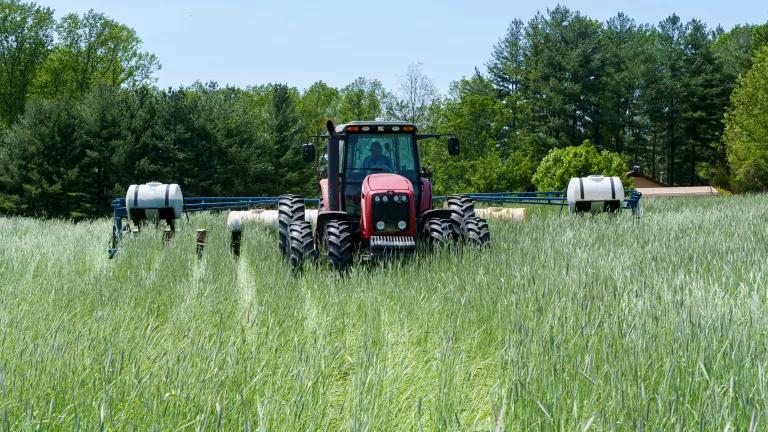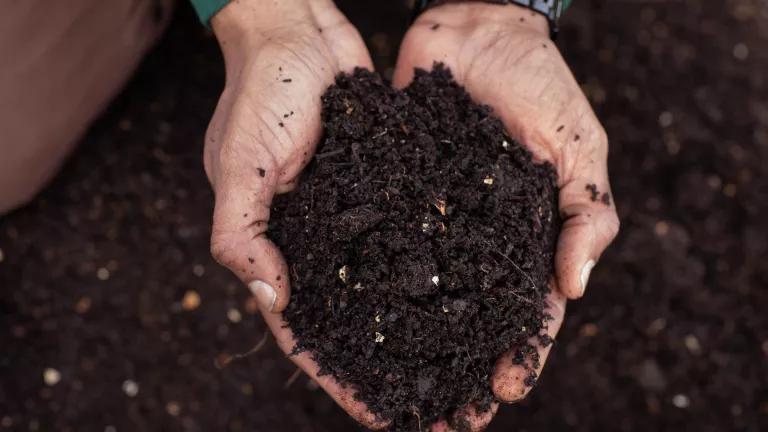I started thinking about food waste back when I was climbing mountains. When you are carrying 30 days’ worth of food on your back, every ounce is precious. When we packed, we weighed our dried beans and oatmeal down to the tablespoon. And we ate every morsel. I would literally lick a margarine wrapper to get every last calorie I could.
And yet when I came home from a trip, I would leave those careful behaviors behind. I would toss out bruised apples. I would not eat the heel of the bread loaf. I would serve myself too much food and throw away what I didn’t eat.
I knew I could do better at conserving my food—I knew because I did it regularly on the mountain. And so long ago, I committed to doing a better job of eating the food I bought.
But more recently, I learned this isn’t just an issue for me and my refrigerator. It affects all of us. NRDC has a robust Food and Agriculture Program, and in the past year, my colleagues started looking at the enormous problem of food waste in this country.
Our country wastes 40 percent of the food we produce. The average American household spends up to $2,000 every year on food we throw away. From the farm to the supermarket to the kitchen, our nation is tossing out huge amounts of good food that could be eaten.
We can do better.
Next Saturday, I’ll be speaking at the TEDxManhattan conference, “Changing the Way We Eat,” about the ways we can change our food system to reduce food waste at home, on the farm, and in supermarkets. (You can see the live webcast on February 16, 2013, at www.livestream.com/tedx, and catch my Twitter chat at 4:30 pm EST today, #TEDxMan.)
We know there are low-tech, tried-and-true solutions that are proven to reduce food waste and save money for consumers and businesses alike. At home, it can be as simple as writing a grocery list and sticking to it. Grocery stores can cut waste by making smaller, but still attractive, food displays. In cafeterias, people eat less, and waste less, if they don’t have a tray. Restaurants can offer different portion sizes to reduce waste.
Confusion about expiration dates is another source of food waste. In the U.K., the government set guidelines to standardize date labeling on foods to clarify when food was safe to eat. This move could reduce household food waste by as much as 20 percent. We should have similar laws here at home, where “best by,” “use by,” and “sell by” dates are, for most products, essentially meaningless when it comes to determining food safety—they end up encouraging people to throw perfectly edible food into the trash.
There are many, many ways to curb food waste. While some of them involve systemic change in the way we grow, sell, and buy food, there are some--such as standardizing date labels--that I would call low-hanging fruit. It’s essential that we start putting more of these solutions into action, here and around the world. A new global campaign, Think. Eat. Save, launched by the United Nations Environment Programme (UNEP), the Food and Agriculture Organization (FAO) and others, is helping push the issue of food waste into the international arena. After all, the amount of food we throw away each year around the globe is enough to feed the world’s 900 million hungry people.
By making sure that good food goes into our bellies, and not into the garbage and landfills, we not only conserve the food itself, but all the resources that go into producing, packaging, and transporting food. Our food waste habits use up four percent of our oil and 25 percent of our fresh water. Throwing out a hamburger wastes as much water as taking a 90 minute shower.
We can change the way we eat. We can make our food system more efficient and less wasteful, and by doing so, we will protect our environment and ensure a more sustainable food supply for the planet.



